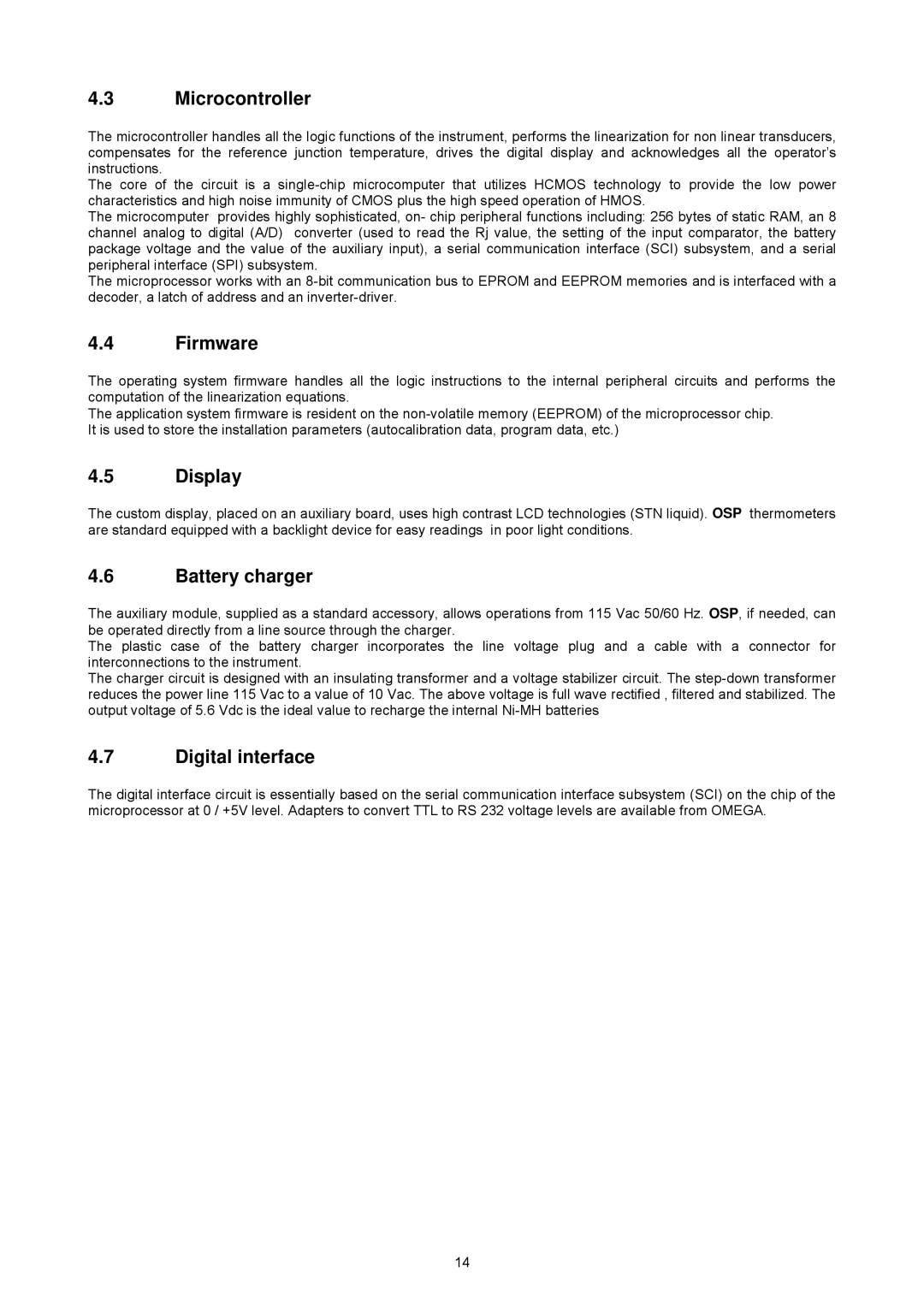4.3Microcontroller
The microcontroller handles all the logic functions of the instrument, performs the linearization for non linear transducers, compensates for the reference junction temperature, drives the digital display and acknowledges all the operator’s instructions.
The core of the circuit is a
The microcomputer provides highly sophisticated, on- chip peripheral functions including: 256 bytes of static RAM, an 8 channel analog to digital (A/D) converter (used to read the Rj value, the setting of the input comparator, the battery package voltage and the value of the auxiliary input), a serial communication interface (SCI) subsystem, and a serial peripheral interface (SPI) subsystem.
The microprocessor works with an
4.4Firmware
The operating system firmware handles all the logic instructions to the internal peripheral circuits and performs the computation of the linearization equations.
The application system firmware is resident on the
4.5Display
The custom display, placed on an auxiliary board, uses high contrast LCD technologies (STN liquid). OSP thermometers are standard equipped with a backlight device for easy readings in poor light conditions.
4.6Battery charger
The auxiliary module, supplied as a standard accessory, allows operations from 115 Vac 50/60 Hz. OSP, if needed, can be operated directly from a line source through the charger.
The plastic case of the battery charger incorporates the line voltage plug and a cable with a connector for interconnections to the instrument.
The charger circuit is designed with an insulating transformer and a voltage stabilizer circuit. The
4.7Digital interface
The digital interface circuit is essentially based on the serial communication interface subsystem (SCI) on the chip of the microprocessor at 0 / +5V level. Adapters to convert TTL to RS 232 voltage levels are available from OMEGA.
14
